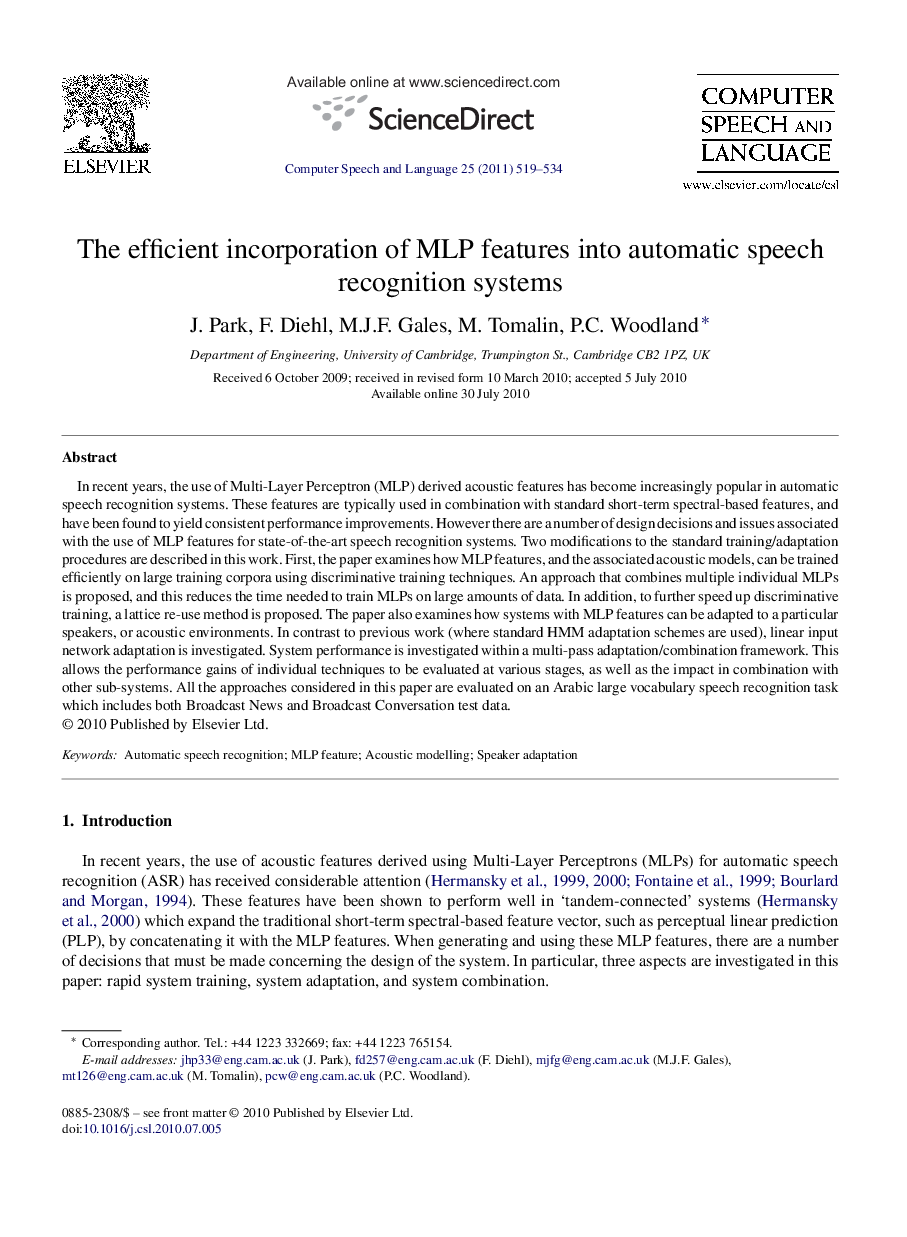| Article ID | Journal | Published Year | Pages | File Type |
|---|---|---|---|---|
| 557932 | Computer Speech & Language | 2011 | 16 Pages |
In recent years, the use of Multi-Layer Perceptron (MLP) derived acoustic features has become increasingly popular in automatic speech recognition systems. These features are typically used in combination with standard short-term spectral-based features, and have been found to yield consistent performance improvements. However there are a number of design decisions and issues associated with the use of MLP features for state-of-the-art speech recognition systems. Two modifications to the standard training/adaptation procedures are described in this work. First, the paper examines how MLP features, and the associated acoustic models, can be trained efficiently on large training corpora using discriminative training techniques. An approach that combines multiple individual MLPs is proposed, and this reduces the time needed to train MLPs on large amounts of data. In addition, to further speed up discriminative training, a lattice re-use method is proposed. The paper also examines how systems with MLP features can be adapted to a particular speakers, or acoustic environments. In contrast to previous work (where standard HMM adaptation schemes are used), linear input network adaptation is investigated. System performance is investigated within a multi-pass adaptation/combination framework. This allows the performance gains of individual techniques to be evaluated at various stages, as well as the impact in combination with other sub-systems. All the approaches considered in this paper are evaluated on an Arabic large vocabulary speech recognition task which includes both Broadcast News and Broadcast Conversation test data.
